Flying With Dogs: Our Top Tips For A Stress-Free Flight
Got a vacation planned with your buddy? Turns out, flying with dogs needs a bit of planning & prep before you two head off on your adventure. Here's everything you need to know to get you started.
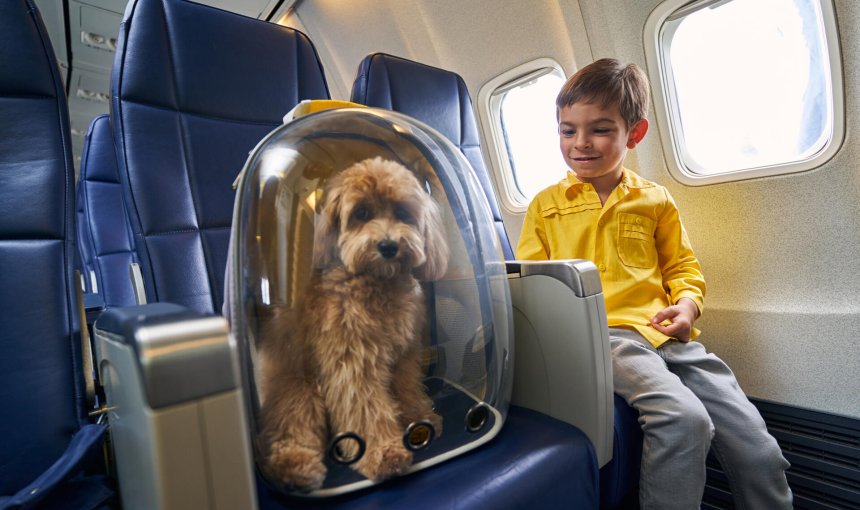
With summer at our doorstep, you might already be planning your vacation – likely with your buddy in tow! But when it comes to flying with dogs – and even more so if you’re flying with a large dog – there’s…quite a bit of planning and prep you’ll need before you two head off to the airport.
So once you’ve gotten your dates booked, here are some steps to take for a fun, safe, stress-free flight. (And how you can prevent your dog from bolting off the leash out of stress.) Let’s get started.
Steps to take before your flight
1. Get your buddy a travel health certificate
Flying with dogs might seem like fun, but it does come with its red tape. Depending on where you’re traveling, you may be required to provide a travel health certificate. (Stating that your dog’s gotten all their shots and isn’t likely to be carrying any harmful diseases.)
Most airlines require this certificate, which should be issued within 10 days of your flight. So before heading off for vacation, make sure to work with your vet to get one issued for your buddy.
- It’s a good idea to make two copies of the certificate, leaving one copy with your boarding documents and one taped on your dog’s carrier.
- If you have specific questions about whether your dog can handle air travel, be sure to ask your vet.
- Check whether pet insurance is an option for you. Some providers specifically include pet travel insurance as a part of your policy.
Read more: How Travel Insurance For Pets = A Stress-Free Vacation
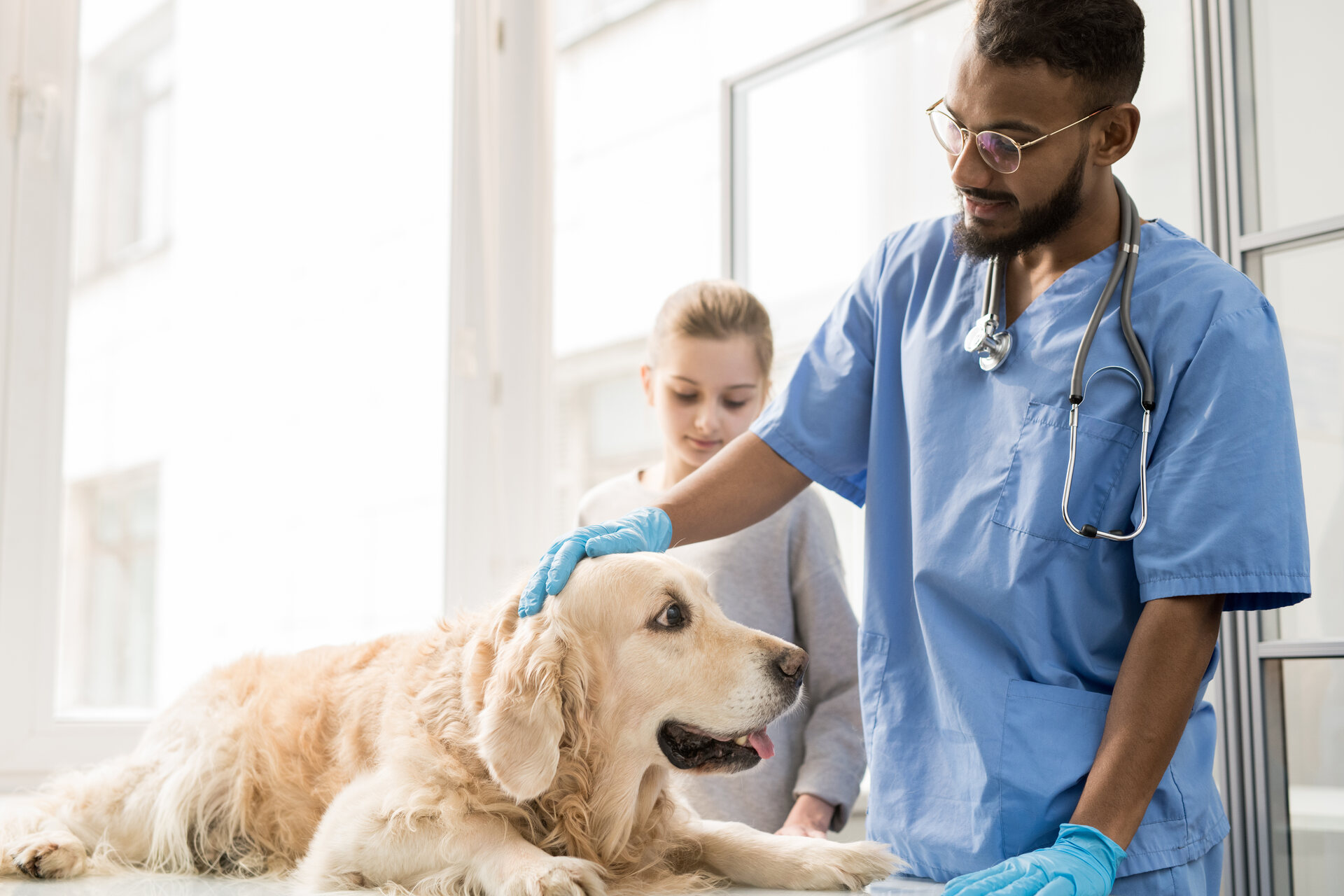
2. Get your dog microchipped
A microchip works like a permanent ID tag for your dog – which can help someone identify them in case your buddy goes missing. Which isn’t just a nice-to-have, but rather a legal requirement in some countries. (Especially for dogs accompanying tourists.)
Besides, microchipping is a quick, painless, relatively affordable procedure you can get done at your vet’s – or at a local community center near you.
- In under 10 minutes, a medical professional can implant a microchip between your dog’s shoulder blades. (It’s about the size of a grain of rice.)
- After, make sure to update your contact details on the microchip database.
- Now if someone scans your dog’s microchip, they can find your contact details and get in in touch with you immediately.
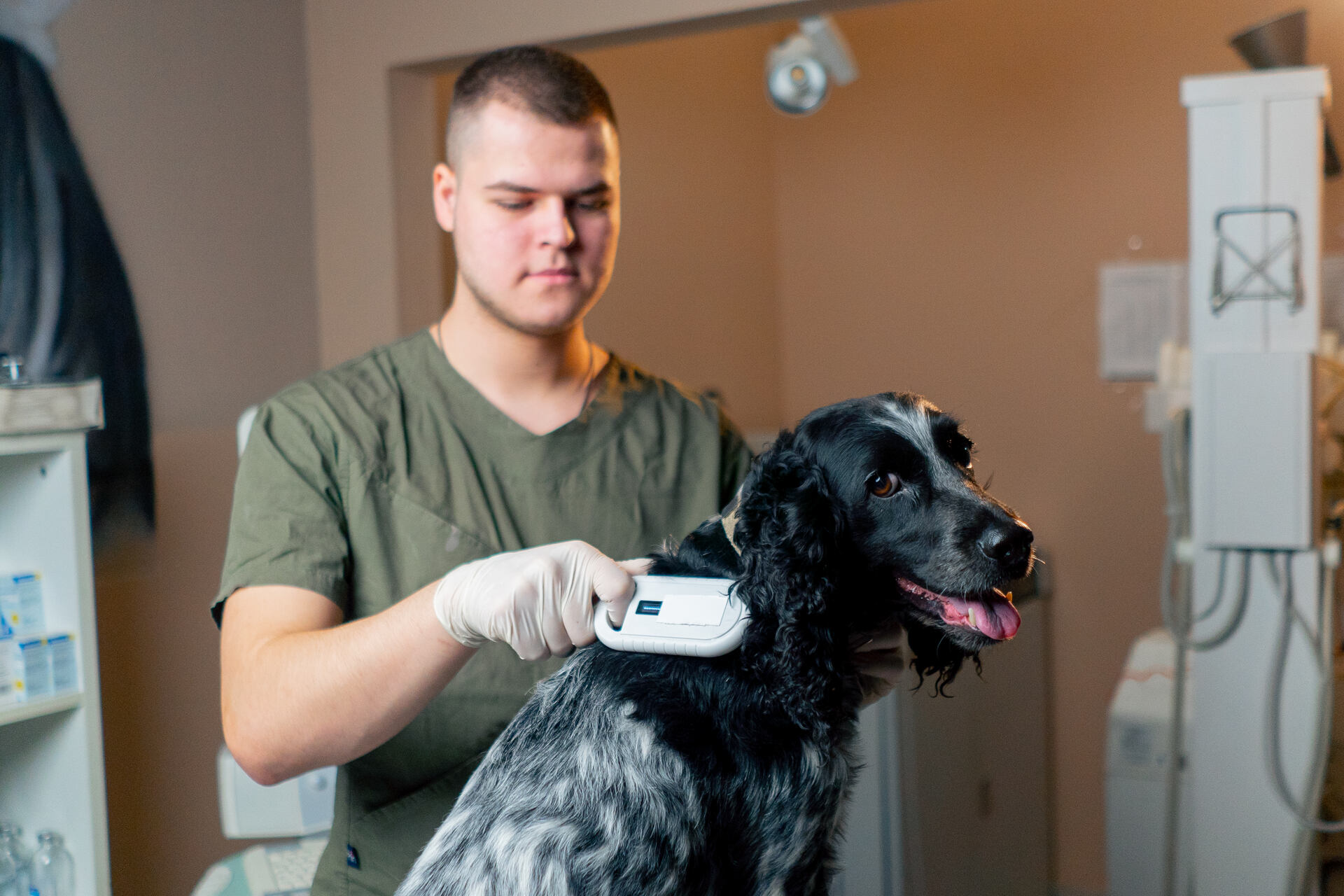
⚠️ A microchip can be a lifesaver if you lose your dog while on vacation – but that still doesn’t mean it can track your dog in real-time or help you follow their every step, in case your buddy goes running off somewhere.
Rather, you’ll have to wait hours – even days – in the hopes a trustworthy stranger finds your dog, brings them to a vet, scans them for a microchip, and then contacts you. Meaning you can’t actually take an active role in finding your dog.
In times like these (and if your dog is a bit of an escape artist in new environments), a GPS tracker can help you track them down in real-time and enable you to actually find them.
Read more: Dog Tracker Chip: What Are Dog Microchips vs GPS Trackers?
3. Check your airline regulations
Not all airlines are equally pet-friendly, and policies can vary significantly. So make sure to thoroughly familiarize yourself with the rules surrounding flying with dogs.
In general, your pet needs to be:
- Older than 12 weeks
- Have certificates of vaccinations and good health
- Be provided with plenty of food and water for longer journeys
And here are a list of pet-friendly airlines you could go for instead:
- American Airlines
- United Airlines
- Delta Airlines
- Air France
- JetBlue
- Lufthansa
- KLM
- Aeroflot
- Frontier Airlines
- Air Canada
- Swiss International
- Alitalia
- Air Malta
- Air India
- Emirates
- Finnair
- Spirit Airlines
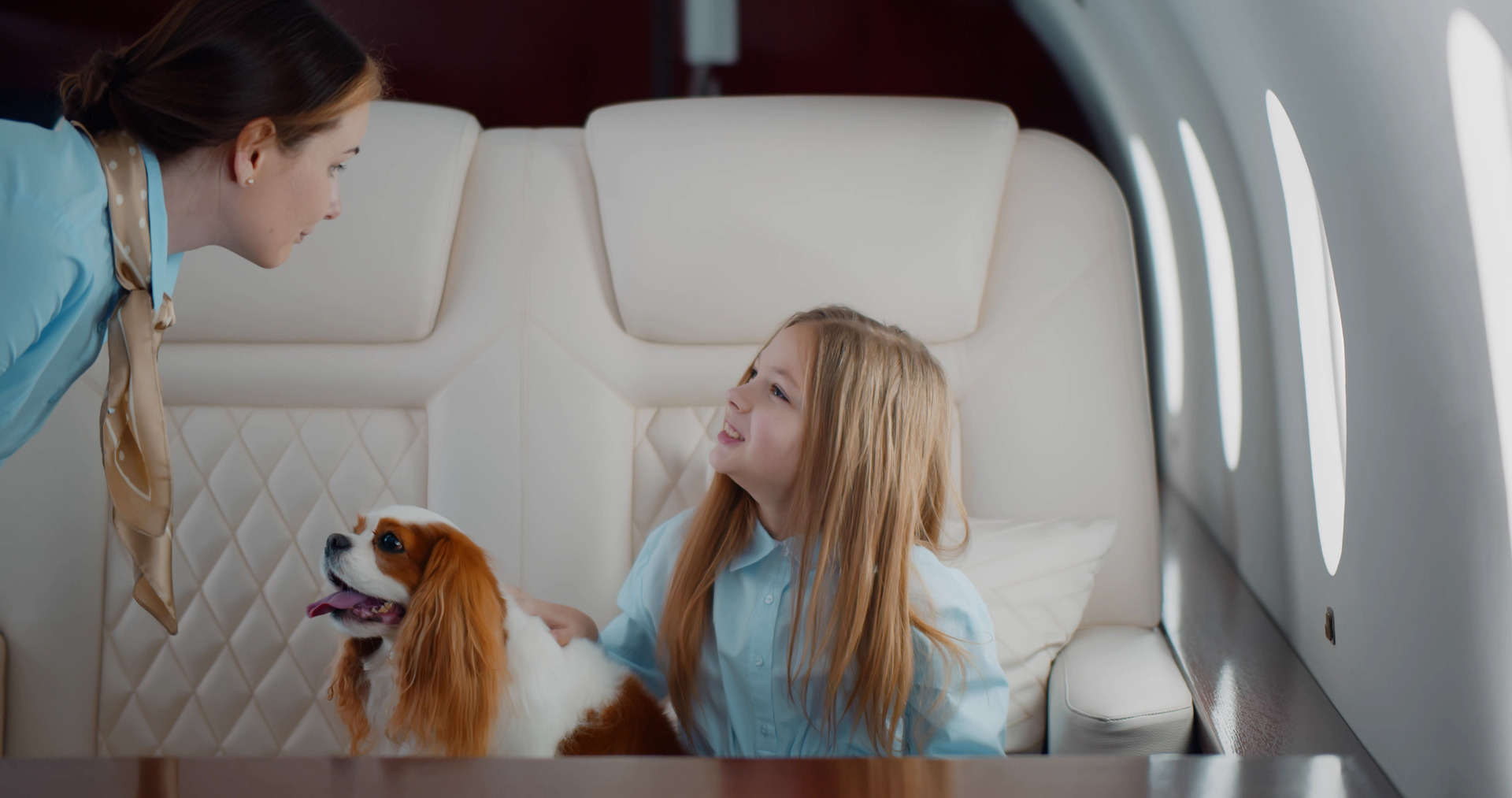
Plus, while booking, we’d recommend you:
- Go for a direct flight, if possible to to minimize stress and the risk of mishandling during layovers.
- If you absolutely can’t avoid it, try and ensure your layover is short and allows enough time for any necessary transfers.
- Keep an eye out for airlines that offer climate-controlled cargo holds and have staff trained in handling companion animals.
- Double check that the hotel, hostel, or AirBnB you’ll be staying at is also pet-friendly.
3. Consider buying your tickets in person
You might be used to buying your tickets online – but in this case, you might be better off getting them in person or over the phone. So you can inform the staff much in advance that you’ll be flying with dogs and can handle all the necessary fees and paperwork.
- If you’re flying with a large dog, your fee might be higher. Plus, they might have to ride in the cargo section.
- Smaller dogs, on the other hand, can most often stay in a carrier underneath your seat.
Which is why it’s so important to…
4. Get your dog used to a travel carrier
As nice as it’d be flying with your dog right next to you, your airline likely isn’t going to let it slide. Rather, you’ll need at least:
- A secure dog carrier
- A leash
- In some cases, a muzzle
So much before your flight, it’s important that your dog is accustomed to being inside a crate. (You don’t want to have to deal with several hours on board with a howling, stressed out dog in the cargo!)
- Start slow and get your dog accustomed to being inside one bit by bit so that they’re better prepared for the journey.
- You could also experiment with short car trips and gradually increase the duration to help your buddy get used to the motion and sounds of travel.
Read more: Driving With A Dog: How To Make Car Trips Safe And Enjoyable
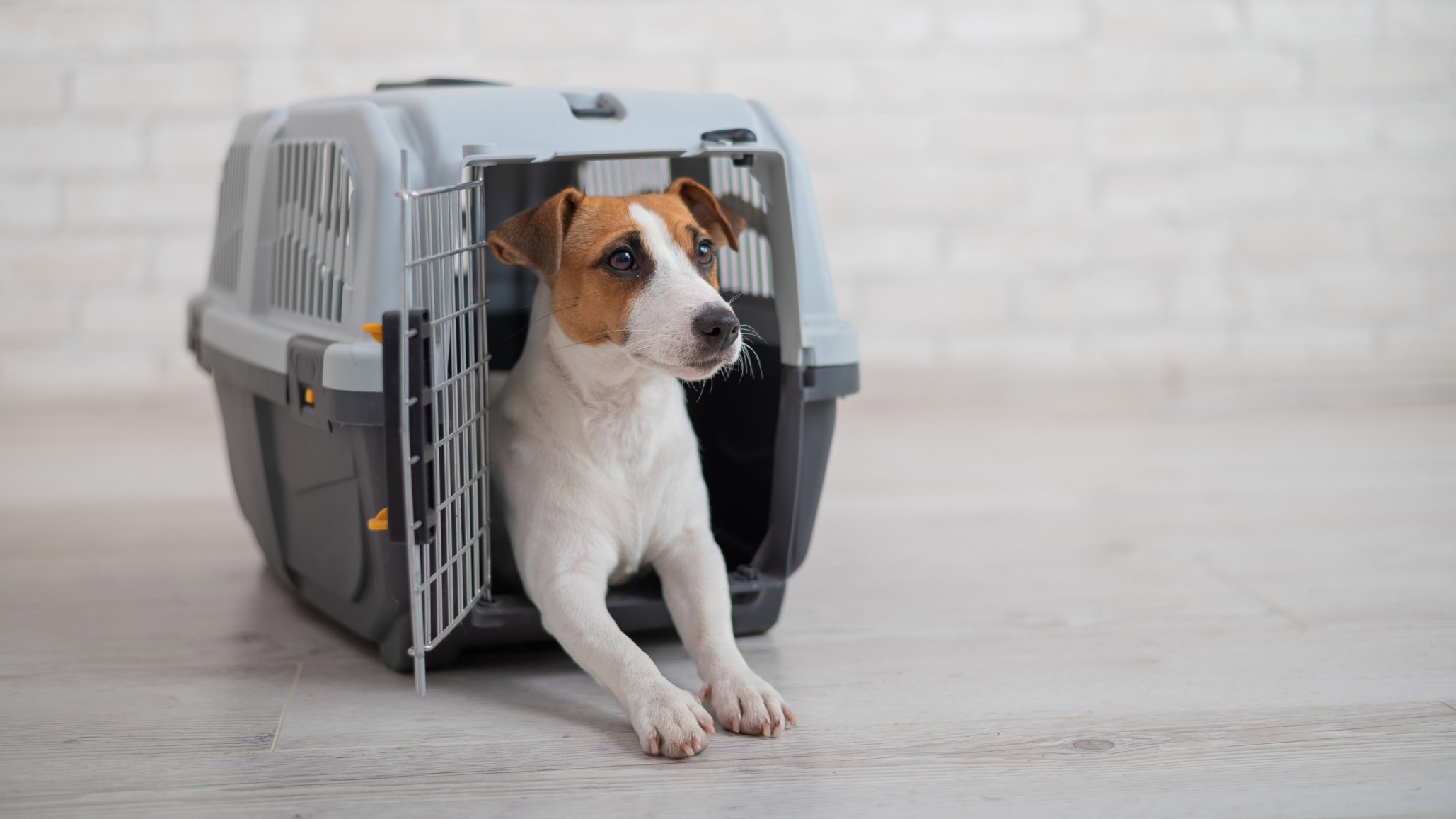
Next, make sure to stay informed about airline dog carrier rules and restrictions.
- Make sure to go for a dog carrier that’s large enough for your dog to stand, turn around, and lie down in comfortably. (And that fits your airline size requirements as well.)
- Label the carrier clearly with your personal contact information and mark the top and sides of the carrier ‘Live Animal.’
- It’s also a good idea to leave your dog’s favorite toy in the carrier with them to help keep them calm.
- Cover the floor of the carrier with a towel to safeguard for accidents.
If you’re flying with a large dog, they might be kept in the cargo hold, which tend to be pressurized and temperature-controlled – but also noisy and disorienting.
So you can help reduce their anxiety by investing in ear covers for them or find a crate that includes an option for playing calming music or white noise throughout the journey.
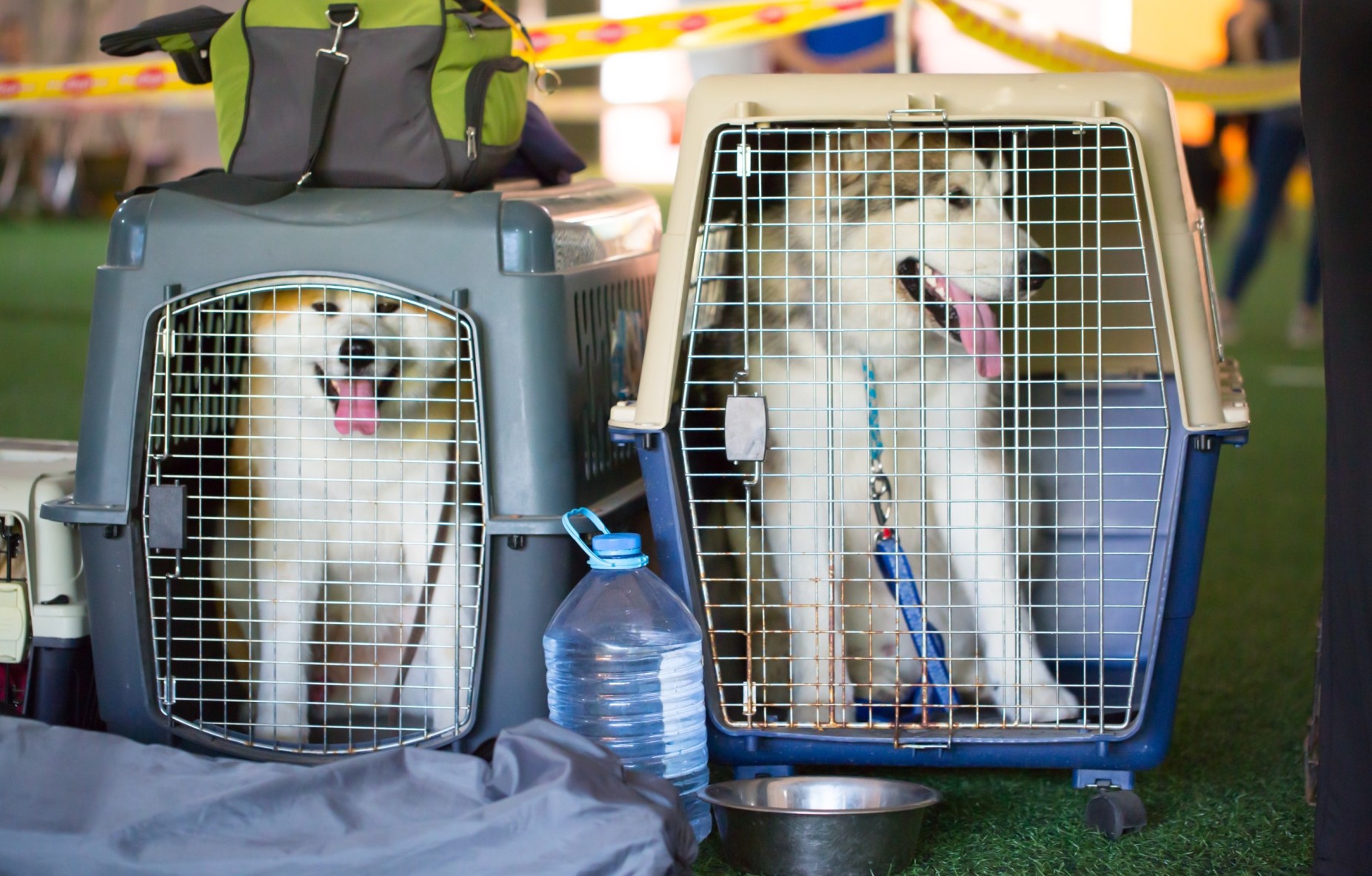
Why you should plan ahead for a lost dog situation on vacation
No matter how much of a good boy or good girl your dog is, there’s always the risk of losing them on vacation. Which, quite frankly, is a nightmare you’re better off avoiding – considering the delays, costs, stress, panic, and anxiety involved.
Because if you’ve got, say, a puppy or an untrained dog at home, there’s always the risk they might bolt the leash due to:
- Panic from the large airport crowds
- Getting spooked by an unfamiliar new environment
- Running off to explore some new sight, sound, or smell out of curiosity – and getting completely lost
⚠️ And even if they’re trained and highly disciplined, there’s nothing stopping your dog from being targeted by pet thieves. (Especially if they’re a rare breed.)
Meaning you’ll now have to spend your hard-earned vacation either monitoring them 24/7 – or wasting more time, energy, and effort searching them down than enjoying yourself.
Read more:
- Why Do Dogs Run Away? 6 Reasons Behind It
- How To Find A Lost Dog: Tips To Bring Your Missing Dog Home Fast
- Dognapping: Pet Kidnapping And How To Keep Your Dog Safe From Dog Thieves
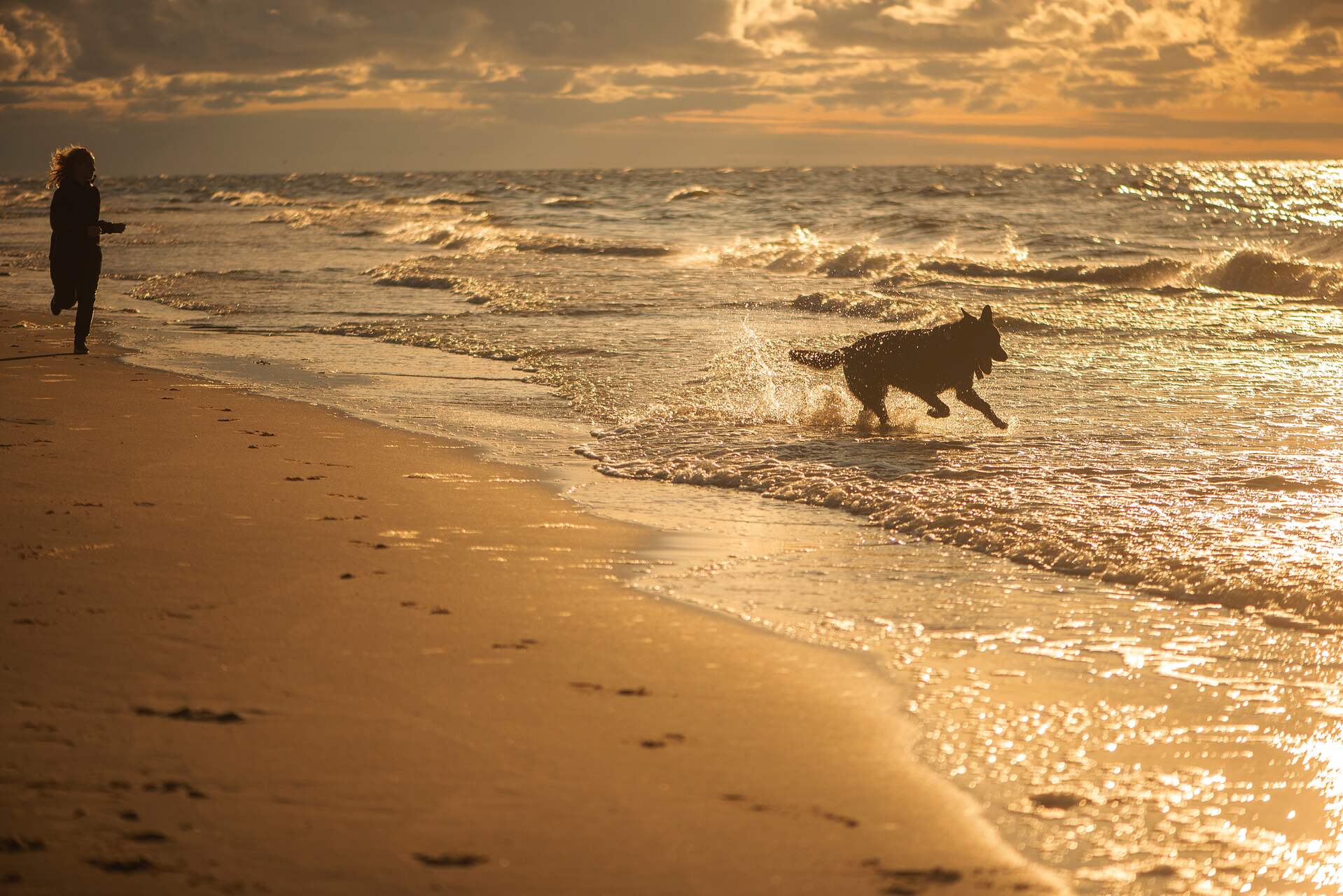

“Ultimately, even a few seconds of negligence can be enough to make a dog run away.
And it’s exactly for these moments that the Tractive tracker is the perfect solution to find your dog again as quickly as possible.”
– Alex Voenken, Founder, Setter Rescue Netherlands
How the Tractive GPS = the perfect travel companion (after your dog, of course)
Now you do want to enjoy vacation without having to keep a firm hand on the leash all day long. (Or worse, chasing down your dog wherever they end up running off to.)
On the other hand, we’re pretty sure you’d like to let your dog…well, just be a dog. Enjoying some free time running around, as free as they please, exploring these new and exciting areas.
But how do you enjoy this freedom while also keeping your buddy safe? Especially in unfamiliar territory?
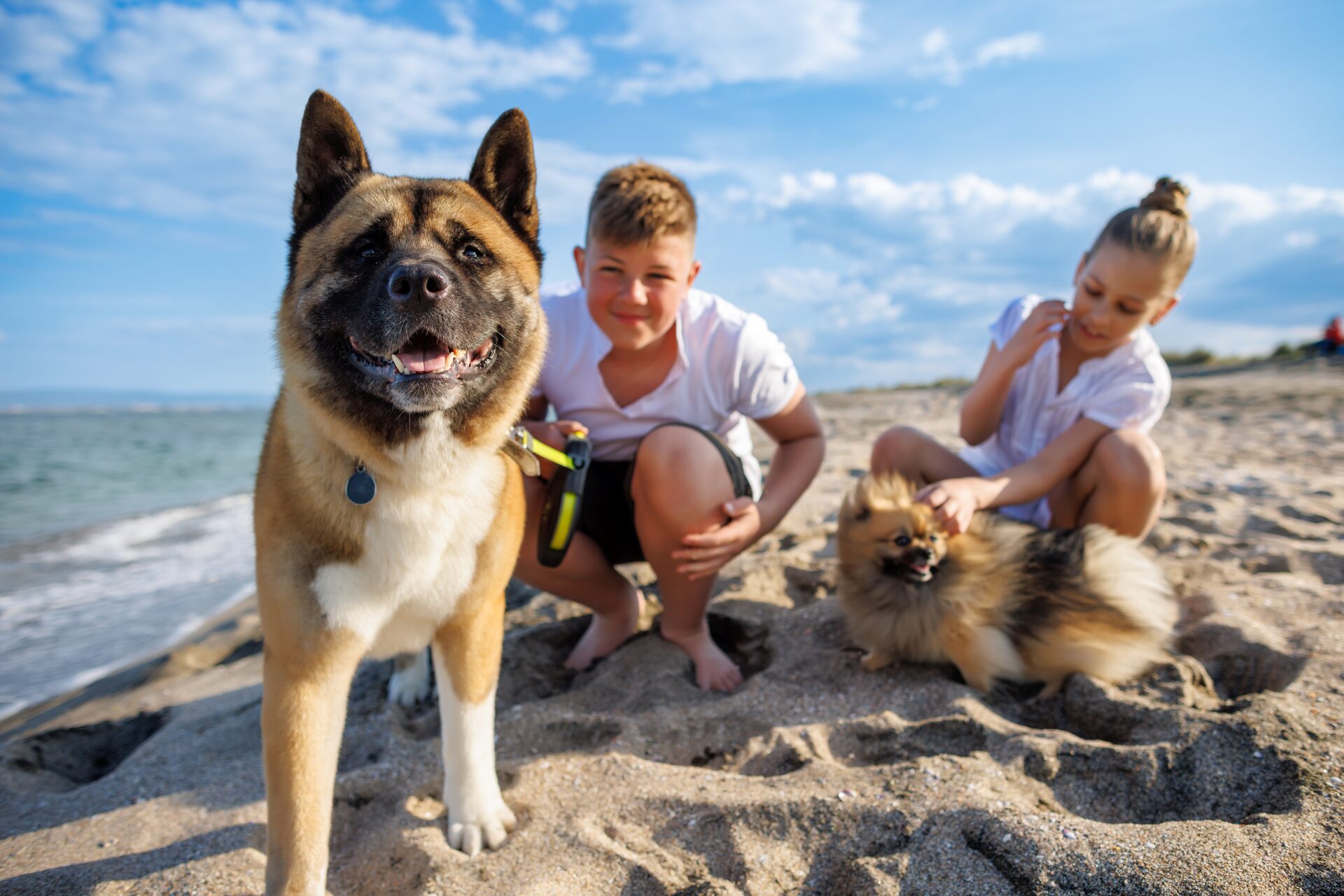
💡 That’s where a GPS tracker can be a lifesaver. Especially if you’ve invested in a Tractive device, which is specifically built with love for dogs and for your peace of mind as a dog parent.
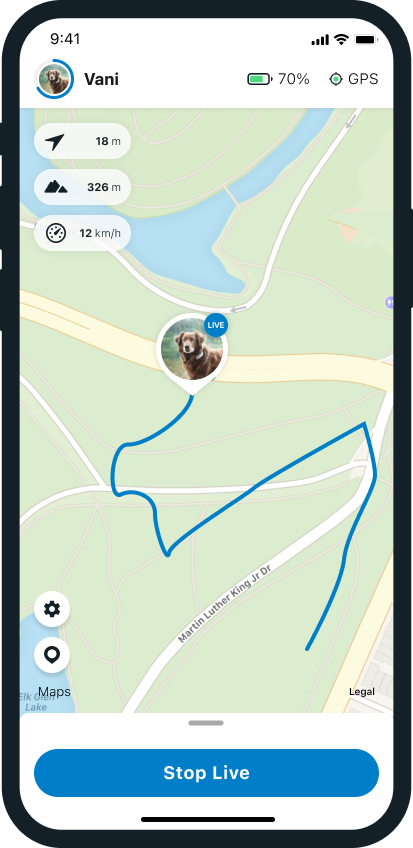
Because with its GPS tracking functions, your trusty Tractive device lets you track your dog:
- Even on vacation, working across 175 countries with its connection to local mobile networks around the world. (On a Premium subscription.)
- In real-time, down to the slightest movement. Saving you precious seconds between them running into danger – or you intercepting them back to safety.
- Over an unlimited range, working as far as the GPS satellites circling our planet allow.

When you’re flying with dogs on the big day
5. Final check
Double check that you have:
- Your dog’s health certificate with your boarding materials and taped to your dog’s carrier.
- Also check that the carrier has all the right labels on.
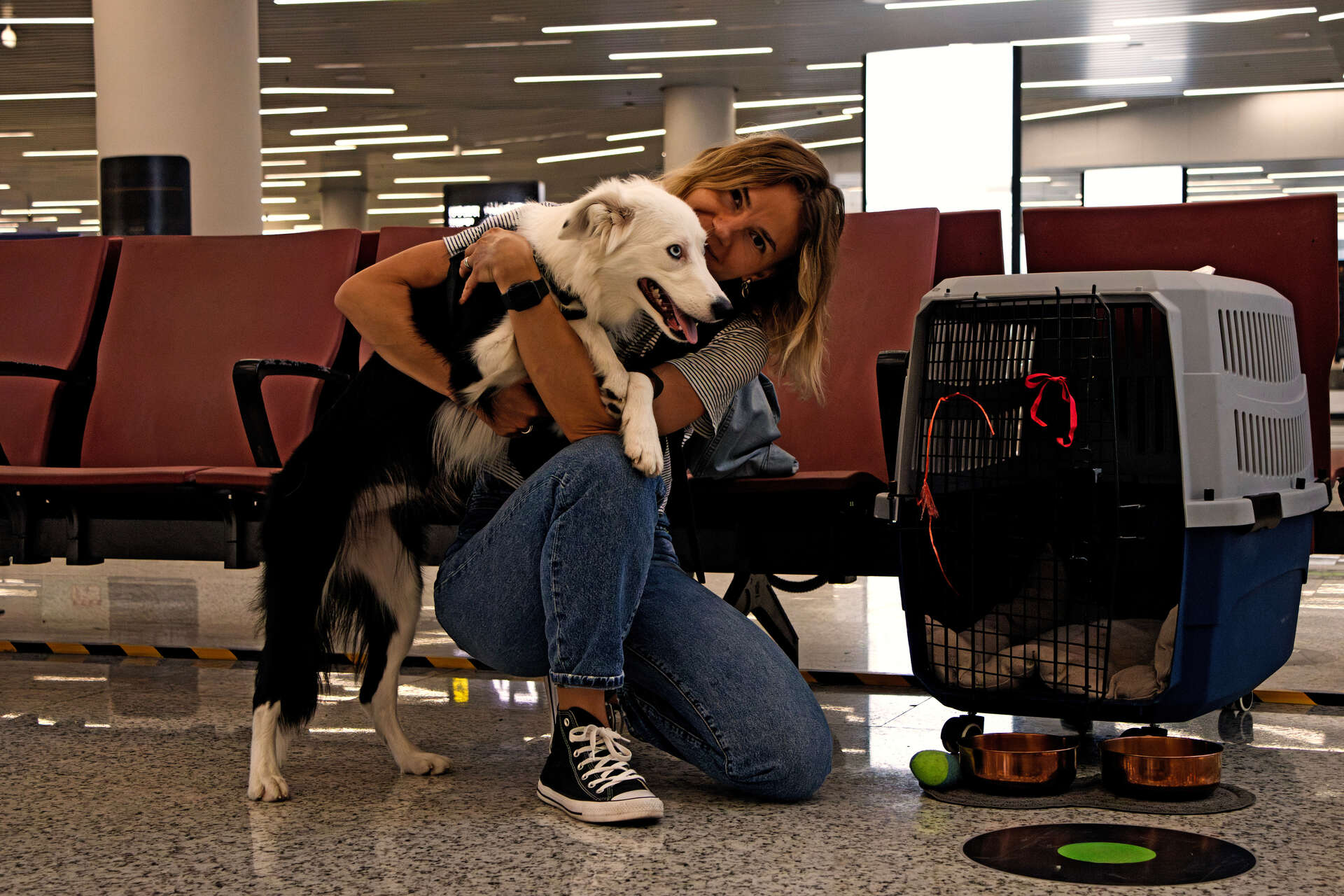
6. Prepare your dog well in advance
- Exercise. A well-exercised dog is more likely to sleep through most of the flight. So keep them busy with a long walk, some extra vigorous playtime, or a bit of last minute training exercises.
- Food and water. Avoid feeding your buddy a large meal just before travel. (Toilet breaks are tough at the airport!) Rather, a light meal and some water a few hours before departure should be fine and help prevent any motion sickness.
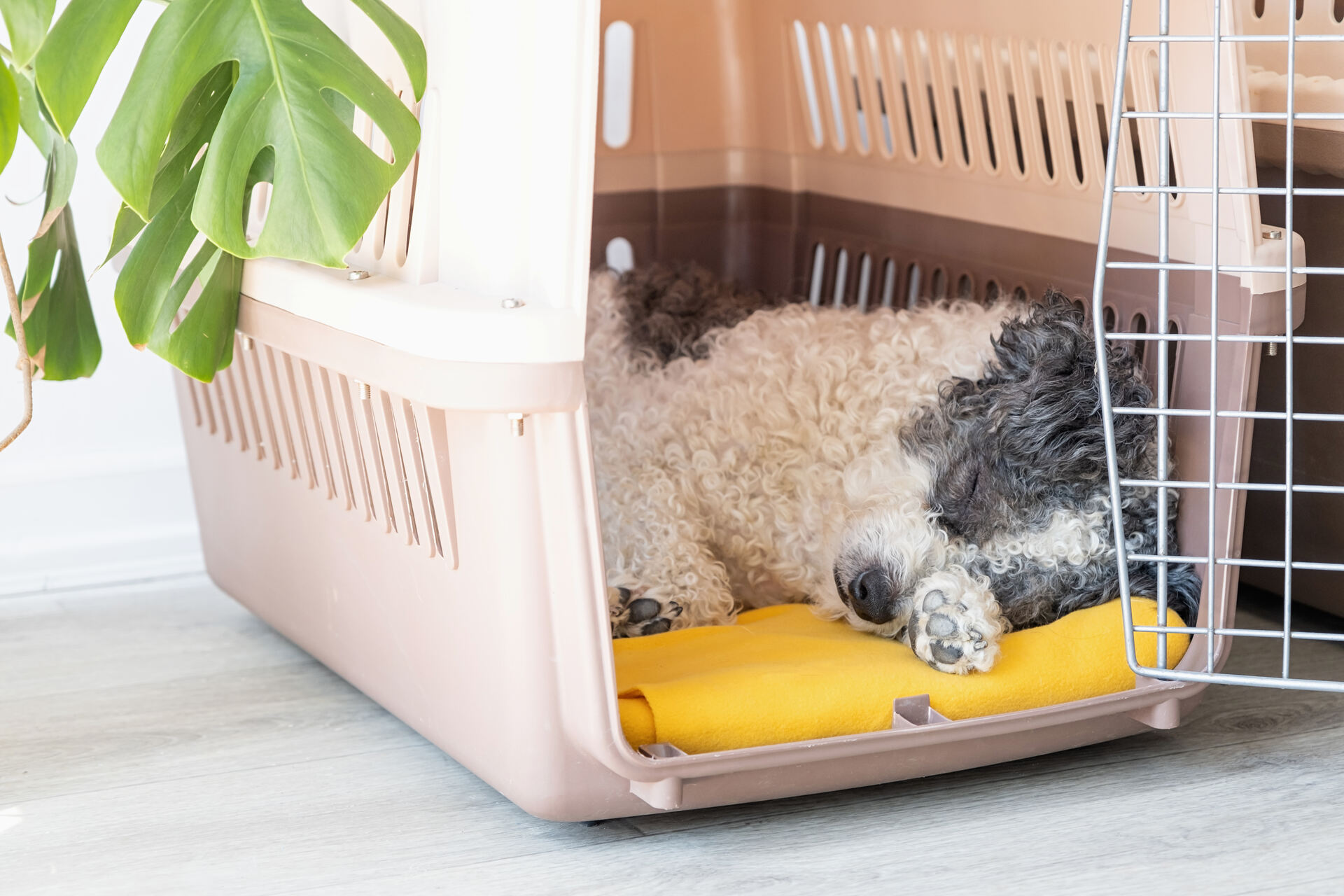
- Toilet breaks. Give your dog enough time to relieve themselves before you both head off to the airport.
- Carrier. If you’re flying with a large dog, fasten a bowl for water and one for food to the inside of the carrier. Tape a serving of food to the outside of the carrier for flight attendants to use, in case there’s a delay.
⚠️ Unless your vet recommends it, avoid giving your dog a sedative under any circumstances. Many such medications designed for humans can be fatally toxic to dogs!
7. Be there in good time
When you’re flying with dogs, it’s smart to turn up at least 1-2 hours earlier than recommended. This way, your airline staff can help check you (and your buddy) in – while being aware you’re traveling with a live animal.
If you’re flying with a large dog, you could ask the staff to show you where the cargo area is for loading. (Since your dog may not be able to stay in the cabin with you.) This will save you a ton of time (and stress.)
8. Arrival & post-flight care
Once you’ve both arrived, retrieve your dog from cargo as soon as possible.
- Check them for any signs of stress or injury.
- Offer water and a toilet break, if necessary. (Don’t overdo it with the water though, else your poor dog might end up throwing up.)
- Allow your buddy to rest and recover from the journey before heading out to explore town. With a little time to acclimate to their new environment, your dog will be more likely to enjoy their time on vacation with you.
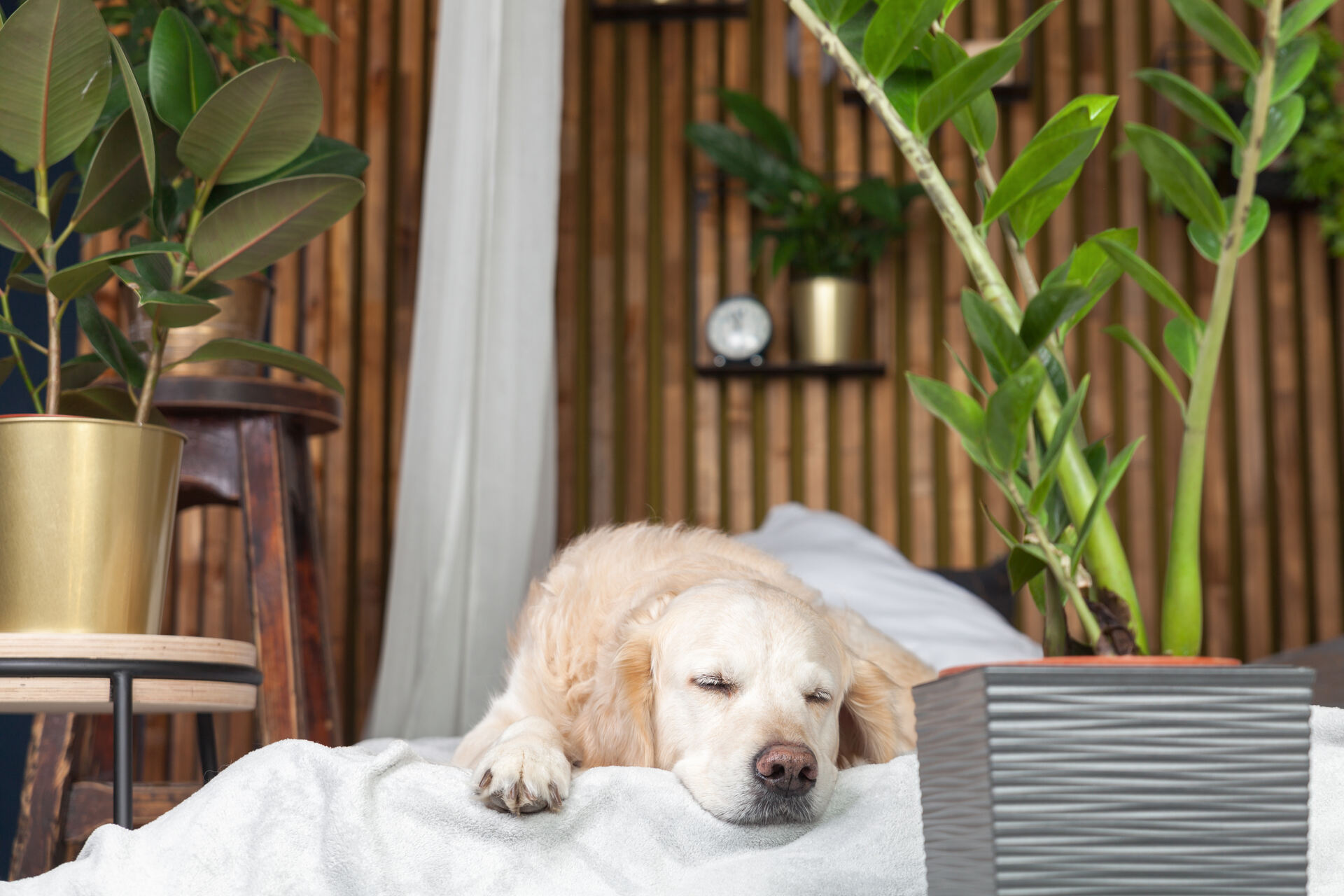
⚠️ If your dog shows signs of extreme stress or dehydration, get in touch with a vet immediately.
Enjoy your trip & make some great memories together!
Now if you’ve taken all these steps, you’ll be better-equipped to handle any curveball the journey throws at you. Specifically:
- Always get your dog a travel health certificate much in advance, stating they’re fit to travel and in good health.
- Get your dog microchipped. Depending on where you’re traveling, this may be a non-negotiable and even a legal requirement! (Plus, it’ll come in handy in case you lose your dog in a crowd and need to prove you’re their owner.)
- Double check your airline regulations to ensure they’re a pet-friendly provider.
- Consider buying your tickets in person, so the airline staff are well-aware you’ll be flying with dogs.
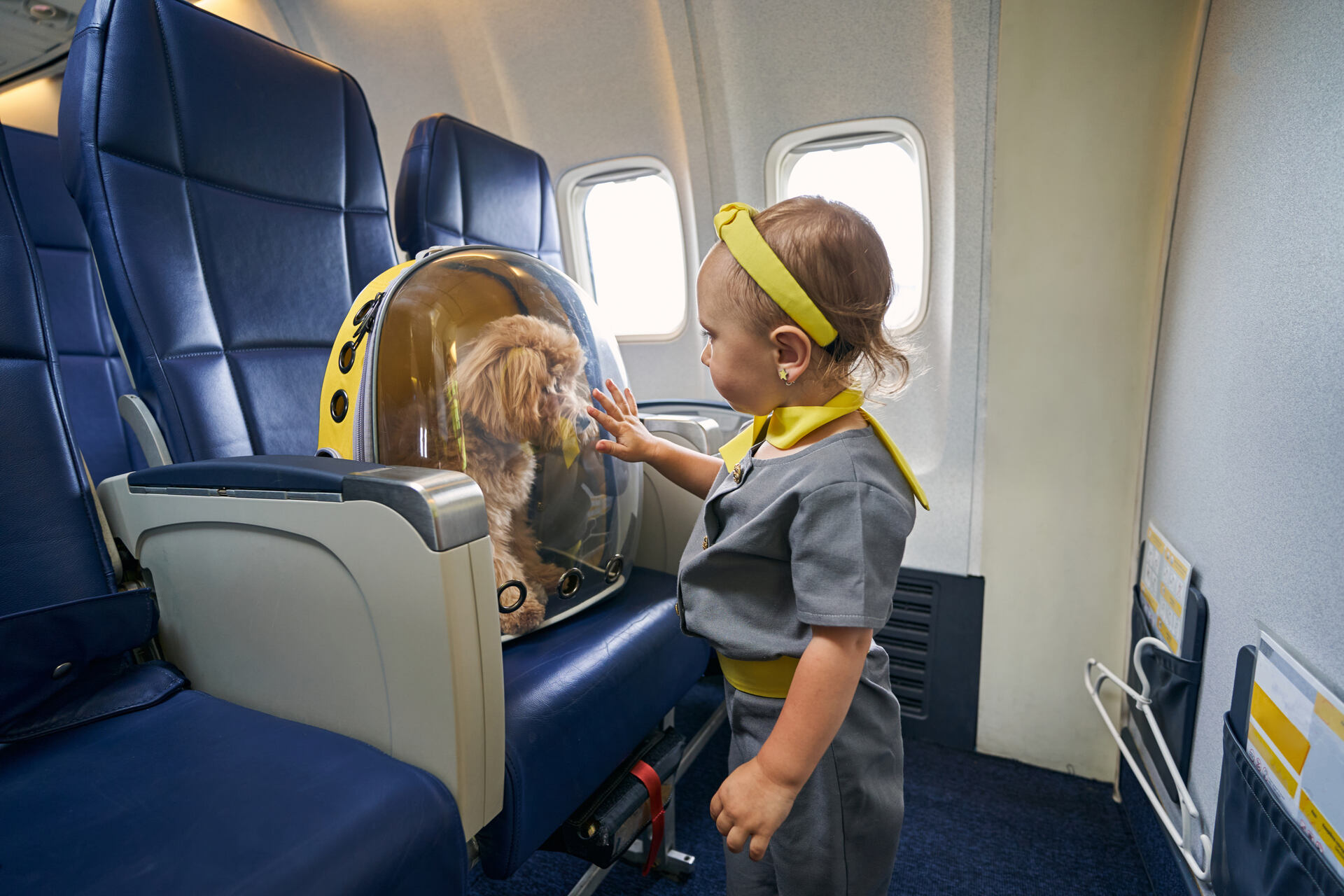
- Get your dog used to traveling in a carrier, so they’re less likely to be stressed out from the trip.
- Exercise your dog before the trip. (So they’re more likely to sleep through most of it.) A little food and water beforehand can help prevent motion sickness.
- Arrive 1-2 hours earlier than recommended, so you can go through the cumbersome check-in process and ensure everyone’s checked in well in advance.
- Let your dog rest, hydrate, and relieve themselves once you’ve arrived. A little time to acclimate to the new environment means they’ll be more likely to enjoy exploring with you!
And while you’re exploring your new vacation area…
- Plan ahead for an emergency – specifically one where your dog might go missing on vacation.
Because in a new, unfamiliar environment, why take the risk and find out the hard way? It only takes a few moments of being distracted by your surroundings for your dog to escape and end up miles away from safety.
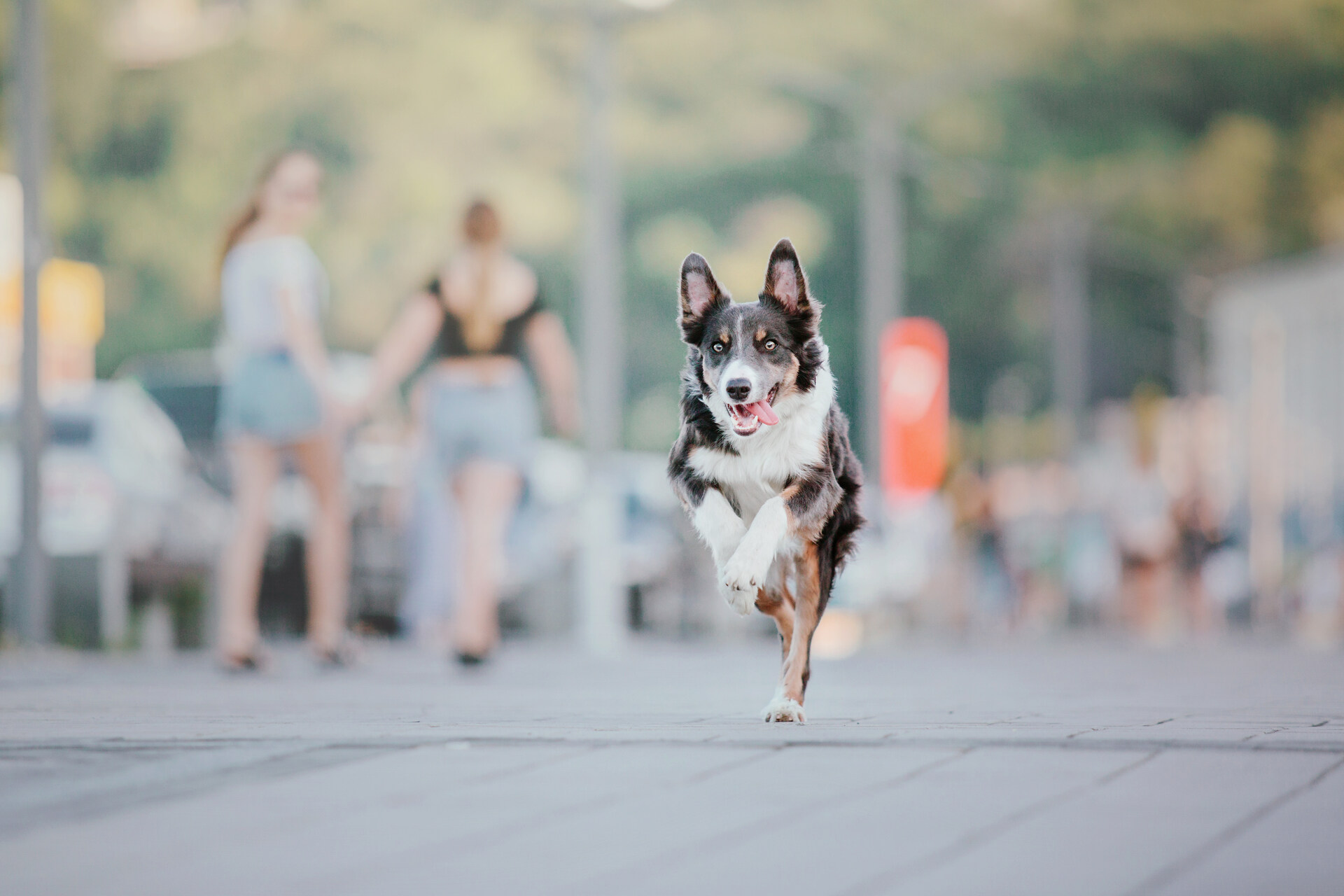
💡Luckily, you’ve got a solution that’s built for both your peace of mind – and for your buddy to enjoy a little freedom while you’re both on vacation.
(It’s also why dog parents around the world – just like you – are investing in our lifesaving technology.)
Because with its:
- Connection to mobile networks across 175 countries (if you’re on a Premium subscription)
- Real-time tracking,
- Unlimited range,
- And a thousand other features built specifically for pet parents…
…your Tractive GPS was designed for that extra bit of peace of mind, especially while you’re traveling.

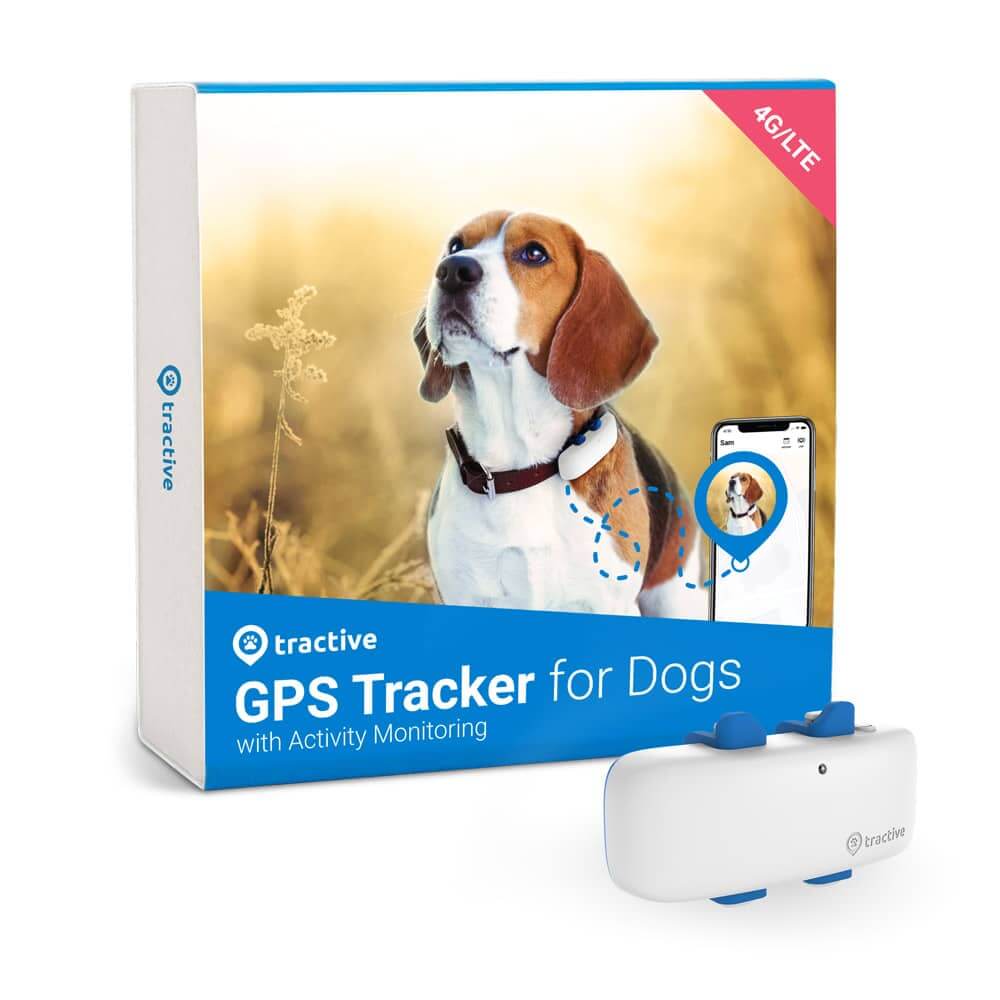
Always know where your dog is
Follow every step in real-time with unlimited range. Get alerts if they wander too far. Keep them happy & healthy with Wellness Monitoring. And let others – like walkers or sitters – keep an eye on your dog too.
For more tips on flying with dogs or traveling with pets in general, here’s the scoop from Kim Salerno, CEO and Founder of Trips with Pets:
And if you’ve liked this post, share it with a fellow dog parent – and let’s help build a safer, kinder world for our furry friends together.




